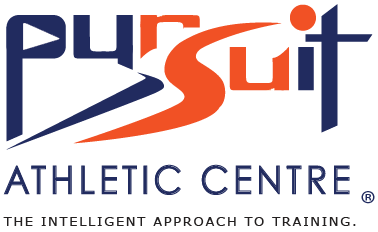5 Things to know about concussions
It’s the end of 2023. By now you’ve likely read some articles or fact sheets pertaining to concussion. Maybe you’ve even had one yourself. Either way, with Winter right around the corner, the hockey season in full effect, and more people seemingly in a hurry around the Christmas season, now seems an appropriate time to discuss some important points regarding concussions.
Concussions are a very complex physiological phenomenon that we are still finding out new information about daily. It’s important to have a trusted source of information when attempting to deal with these injuries. Something as simple as a poor piece of advice or an improper diet can send a concussed patient down a spiral of symptomatic distress.
Conversely, approaching a trained professional and someone who appraises new research regularly, can help expedite the process and get you back to what you love within days!
To help you out in navigating all the information out there, here are five extremely important points pertaining to concussion.
Rest is not best
This is the most common misconception when it comes to concussion recovery. Unfortunately, too many healthcare practitioners are still utilizing this approach due to a lack of knowledge and understanding. Rest is only indicated for the first 24-48 hours following a concussion and then gradual reintroduction of daily activities is strongly recommended. In fact, long standing bed rest will lengthen the time required to recover from concussion.
A concussion is not the result of your brain hitting the inside of your skull and causing a bruise
An old theory about what happens during a concussive event was that the brain moves around inside the skull and when struck will bash up against the side of the skull causing a bruise. The most recent research and widely accepted reasoning around concussive injury is now due to an ‘acceleration and deceleration’ event. What this means is that the brain is made primarily of two different substances, white matter and grey matter. These two components are made of different densities and have countless number of connections to one another called axons. When the head is hit in a concussive event, the grey matter and white matter will accelerate at different speeds. Due to their differing acceleration speeds, there is stretching and subsequent damage of the axons that link both grey matter and white matter together.
When you have a concussion, you will ALWAYS have a whiplash injury to your neck.
When it comes to concussion treatment, the neck is ALWAYS (100% of the time) involved. It still baffles my mind to see so many practitioners avoid treating the cervical spine (neck) after a patient has suffered a concussion. According to biomechanical data (2012), a concussion will occur at an acceleration to deceleration force of 70-120 gravitational units. In addition to that, biomechanical research shows that whiplash occurs at an acceleration-deceleration force of just 4.5 gravitational units. Therefore, with every concussion you may endure, you will always have a whiplash component that needs to be addressed!
Long standing concussion symptoms (>14-30 days) are a result of 5 variables.
Post-Concussion Syndrome is a complex pathophysiological process that has many practitioners and researchers puzzled. It is most often very taxing to the patient and their support system. It’s the ongoing headaches, dizziness, nausea, or other concussion related symptom for a long-lasting period of time. Some practitioners may give up on these patients, while other practitioners will tell the patient to “Stop Faking It”. In fact, I heard that just last week! However, I’m here to tell you there is hope. You are not faking it! It is very real! It is a combination of five main factors that can all be treated by a trained, competent therapy team.
The five components of dysregulation that make up the post-concussion soliloquy include:
1. Blood Flow Abnormalities
2. Diet, Inflammatory, Hormonal Dysregulation
3. Visual or Vestibular Deficits
4. Cervical Spine (Neck) Dysfunction
5. Psychological (Depression, Anxiety, Etc.) Distress
Helmets DO NOT prevent concussion
This one is simple. A helmet or mouthguard will not protect against a concussion. Helmets and mouthguards are to be worn to limit dental or skull fractures. There is no current evidence to show their role in preventing a concussion.
Suffering from a concussion?
Have more questions?
We are here to help. Book your appointment to chat with us today!
References Cited
Leddy JJ, Haider MN, Ellis MJ, Mannix R, Darling SR, Freitas MS, Suffoletto HN, Leiter J, Cordingley DM, Willer B. Early subthreshold aerobic exercise for sport-related concussion: a randomized clinical trial. JAMA pediatrics. 2019 Apr 1;173(4):319-25.
Vagnozzi R, Tavazzi B, Signoretti S, Amorini AM, Belli A, Cimatti M, Delfini R, Di Pietro V, Finocchiaro A, Lazzarino G. Temporal window of metabolic brain vulnerability to concussions: mitochondrial-related impairment—part I. Neurosurgery. 2007 Aug 1;61(2):379-89.
Signoretti S, Lazzarino G, Tavazzi B, Vagnozzi R. The pathophysiology of concussion. Pm&r. 2011 Oct 1;3(10):S359-68.
Park K, Ksiazek T, Olson B. Effectiveness of vestibular rehabilitation therapy for treatment of concussed adolescents with persistent symptoms of dizziness and imbalance. Journal of sport rehabilitation. 2018 Sep 1;27(5):485-90.
Broglio SP, Surma T, Ashton-Miller JA. High school and collegiate football athlete concussions: a biomechanical review. Annals of biomedical engineering. 2012 Jan 1;40(1):37-46.
Broglio SP, Eckner JT, Paulson HL, Kutcher JS. Cognitive decline and aging: the role of concussive and subconcussive impacts. Exercise and sport sciences reviews. 2012 Jul;40(3):138.

